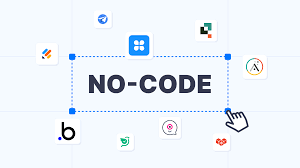The demand for software applications is at an all-time high, but not everyone has the coding skills to build them. Enter no-code platforms—tools that allow individuals and businesses to create apps, websites, and digital solutions without writing a single line of code. These platforms are democratizing app development and empowering people from all walks of life to bring their ideas to life.
1. What Are No-Code Platforms?
No-code platforms provide a visual interface that lets users drag and drop elements to create apps or websites. These platforms abstract the technical complexities of programming, allowing non-developers to design functional applications.
Some popular no-code platforms include:
- Webflow: For building highly customizable websites.
- Bubble: A versatile platform for building web applications.
- Airtable: A no-code database platform that’s often used to build internal tools and workflows.
- Adalo: A no-code tool for building mobile apps.
2. Why No-Code Is Revolutionizing Development
No-code platforms are changing the way businesses and entrepreneurs approach app development. Here’s why they’re becoming increasingly popular:
- Lower Costs: Traditional app development can be expensive, requiring skilled developers and long timelines. No-code platforms allow users to build apps at a fraction of the cost.
- Speed: No-code tools drastically reduce development time. What would take weeks or months to code can often be accomplished in a matter of days or even hours.
- Accessibility: With no-code platforms, anyone with a vision for an app or website can bring it to life, regardless of their technical skills. This levels the playing field and opens the door to innovation for non-developers.
3. Use Cases for No-Code Development
No-code platforms are being used across a wide range of industries for different purposes:
- Startups: Entrepreneurs can quickly prototype their ideas and test them in the market without investing heavily in development.
- Internal Tools: Businesses can build internal applications to automate workflows, manage projects, or track inventory without relying on IT departments.
- E-commerce: Many businesses use no-code platforms to create custom e-commerce sites that fit their brand and operational needs.
4. Limitations of No-Code Platforms
While no-code tools are powerful, they do have some limitations:
- Complexity: No-code platforms are ideal for simple to moderately complex applications. For highly complex apps with specific technical requirements, traditional coding may still be necessary.
- Customization: While no-code platforms offer a lot of flexibility, there may be limits to how much you can customize an app’s functionality or design compared to a fully coded solution.
- Scalability: Some no-code apps may not scale as efficiently as traditional apps once they reach a certain user base or performance threshold.
5. The Future of No-Code Platforms
As no-code tools continue to evolve, they are likely to become even more powerful and widely adopted. Here are some trends to watch:
- AI Integration: Future no-code platforms may integrate AI tools to help users design smarter and more responsive applications.
- Enterprise Adoption: Larger organizations are starting to embrace no-code platforms for building internal tools and automating business processes.
- Hybrid Development: No-code tools may be combined with traditional development, allowing developers to add custom code where necessary while still leveraging the speed and convenience of no-code.
Conclusion
The rise of no-code platforms is a game-changer for app development, enabling more people to create digital products than ever before. As these platforms continue to mature, they will play an increasingly important role in the tech landscape, bridging the gap between ideas and implementation.
